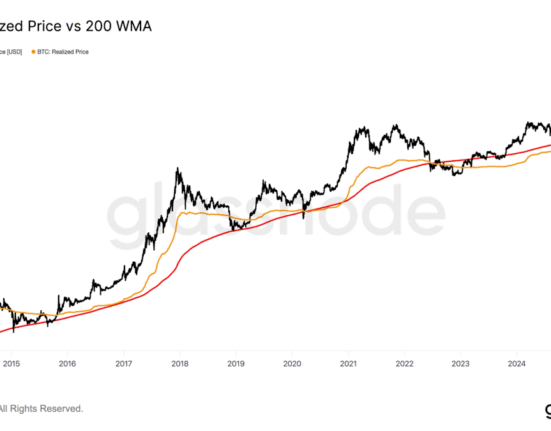The number of farm operations filing for bankruptcy remains at historically low levels but has jumped sharply this year as a crisis in the agricultural economy drags on.
In the second quarter, there were 93 filings, according to the Federal Reserve Bank of Minneapolis, up from 88 in the first quarter and nearly double the 47 at the end of 2024.
That’s still well below the recent high of 169 in early 2020, and filings nosedived in the two years that followed. But since 2022, farm bankruptcies have been trending higher.
That coincides with higher production costs and plunging crop prices. For instance, corn prices have crashed about 50% since 2022, while soybean prices are down about 40%.
More recently, President Donald Trump’s trade war this year has kept China, traditionally a top buyer of U.S. soybeans, from placing any orders with American farmers, who are facing an uncertain harvest season.
But crop prices have been weak for most of the past decade except for brief a spike during the pandemic, according to the Minneapolis Fed.
And while the Agriculture Department has forecast that farm incomes will increase this year, about three-quarters of that growth will come from an expected boost in government payments, it added.
The Federal Reserve’s recent survey of farm financial conditions found that weaker income has reduced liquidity for farmers, boosting demand for financing.
At the same time, credit conditions deteriorated with roughly 30% of respondents in the Chicago Fed and Kansas City Fed districts reporting lower repayment rates versus a year ago, while the Minneapolis Fed region’s share was around 40% and the St. Louis Fed’s was 50%.
To be sure, the recent spike in bankruptcies doesn’t mean farmers are going out of business, the Minneapolis Fed pointed out. A Chapter 12 filing can help them avoid total liquidation and allow them to continue operating, perhaps on a smaller scale after some restructuring.
Still, agriculture trade groups have been calling on the Trump administration for help in boosting demand for U.S. crops as they sound the alarm on a crisis in the farm economy.
That includes reaching a trade deal with China to start buying U.S. soybeans again and requiring fuel with higher blends of ethanol, which can be made from corn.
“Soybean farmers are under extreme financial stress,” the American Soybean Association said in a letter to Trump in August. “Prices continue to drop and at the same time our farmers are paying significantly more for inputs and equipment. U.S. soybean farmers cannot survive a prolonged trade dispute with our largest customer.”
The number of farm operations filing for bankruptcy remains at historically low levels but has jumped sharply this year as a crisis in the agricultural economy drags on.
In the second quarter, there were 93 filings, according to the Federal Reserve Bank of Minneapolis, up from 88 in the first quarter and nearly double the 47 at the end of 2024.
That’s still well below the recent high of 169 in early 2020, and filings nosedived in the two years that followed. But since 2022, farm bankruptcies have been trending higher.
That coincides with higher production costs and plunging crop prices. For instance, corn prices have crashed about 50% since 2022, while soybean prices are down about 40%.
More recently, President Donald Trump’s trade war this year has kept China, traditionally a top buyer of U.S. soybeans, from placing any orders with American farmers, who are facing an uncertain harvest season.
But crop prices have been weak for most of the past decade except for brief a spike during the pandemic, according to the Minneapolis Fed.
And while the Agriculture Department has forecast that farm incomes will increase this year, about three-quarters of that growth will come from an expected boost in government payments, it added.
The Federal Reserve’s recent survey of farm financial conditions found that weaker income has reduced liquidity for farmers, boosting demand for financing.
At the same time, credit conditions deteriorated with roughly 30% of respondents in the Chicago Fed and Kansas City Fed districts reporting lower repayment rates versus a year ago, while the Minneapolis Fed region’s share was around 40% and the St. Louis Fed’s was 50%.
To be sure, the recent spike in bankruptcies doesn’t mean farmers are going out of business, the Minneapolis Fed pointed out. A Chapter 12 filing can help them avoid total liquidation and allow them to continue operating, perhaps on a smaller scale after some restructuring.
Still, agriculture trade groups have been calling on the Trump administration for help in boosting demand for U.S. crops as they sound the alarm on a crisis in the farm economy.
That includes reaching a trade deal with China to start buying U.S. soybeans again and requiring fuel with higher blends of ethanol, which can be made from corn.
“Soybean farmers are under extreme financial stress,” the American Soybean Association said in a letter to Trump in August. “Prices continue to drop and at the same time our farmers are paying significantly more for inputs and equipment. U.S. soybean farmers cannot survive a prolonged trade dispute with our largest customer.”









Leave feedback about this